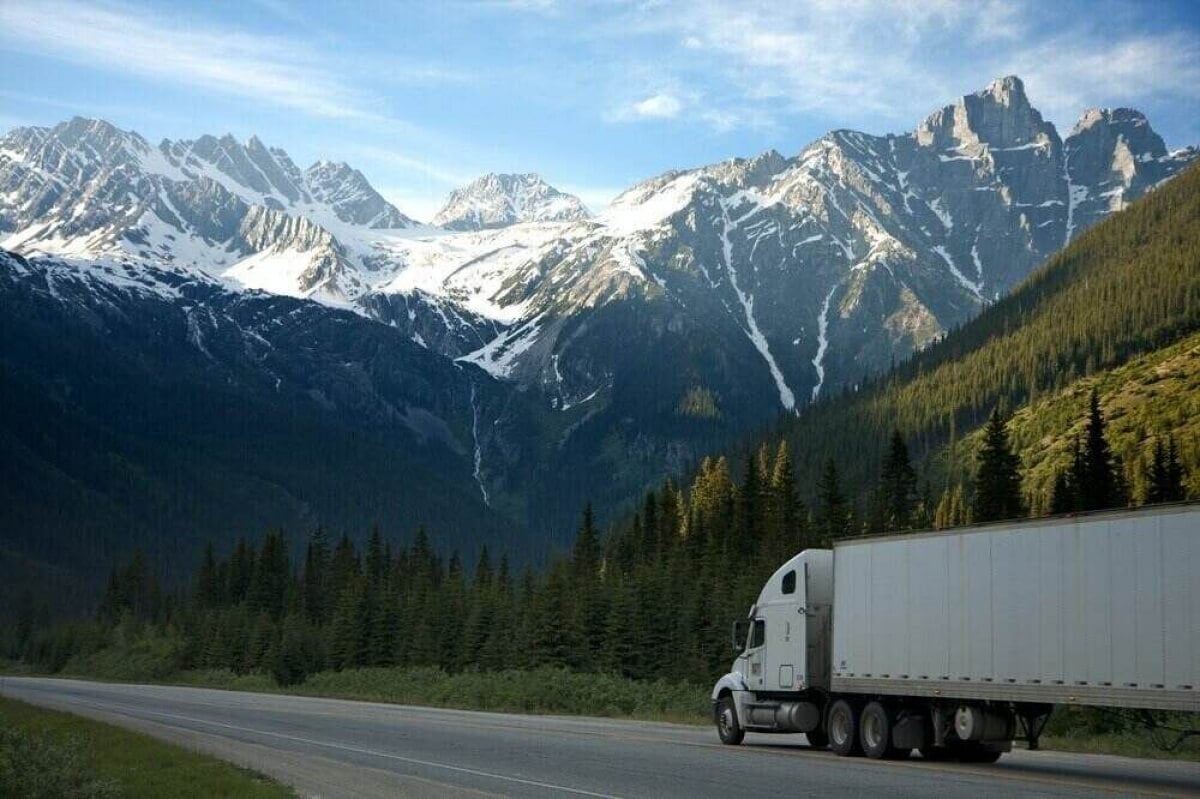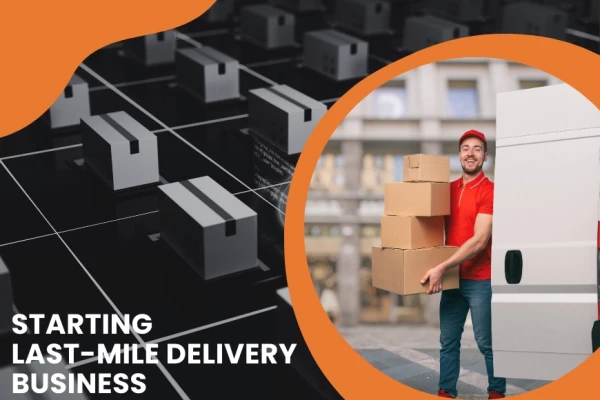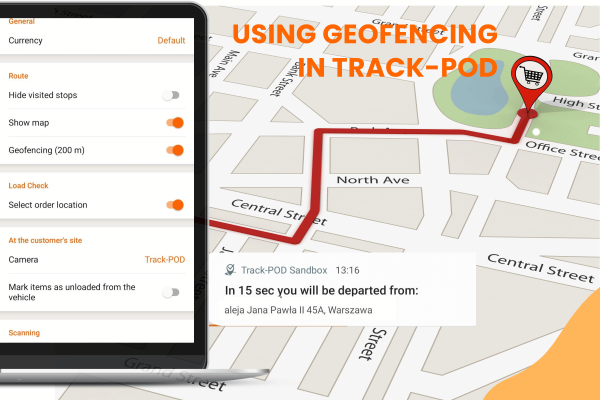What Is Last Mile Delivery & Why You Need to Optimize It

by
Tanya Derevyanko
March 24, 2021
With the rise of eCommerce and rapidly changing consumer demands, the delivery business has become quite an important sector. Last mile delivery specifically, is what needs the attention of organizations.
Last mile delivery provides much more impact than any other stage in the delivery process. It is the part of the process that determines the customer experience outcome. As such, this stage represents your company more than any other stage. Despite this, many people overlook its importance.
When it comes to logistics management, this process needs to be executed with absolute efficiency. In this article, we’ll tell you what you need to know about last mile delivery, and we’ll include some tips on how to optimize it with the right last mile logistics software.
What is last mile delivery?
From the placement of an order to the successful arrival of the package at its final destination, a lot happens. Last mile delivery comes at the very end of this process, it is the final step of the chain of events. Here, the goods are transported to the customer’s door and handed over to them.
At face value, the term suggests that it only accounts for the very last mile of the entire process. Of course, this is not the case. This step could be 100 miles or just a couple of blocks. No matter the real distance of the last mile delivery route, this step in the process of delivery is imperative to get right.
Last mile delivery can be carried out by a third-party courier or package delivery company directed by the retailer. In the entire shipping process, the last stage is the necessary one for driving growth and profitability in the industry.
Last mile delivery is mainly related to the e-commerce market, which is expected to double in size over the next ten years. This is an area of logistics that requires major focus due to its importance for businesses and increasing demands.
The stages of last mile delivery: an overview
Last mile delivery is much more than simply dropping a package off at the final location. The entire process covers a few steps. First, a request or order is made from the consumer.
This order then sparks the beginning of the delivery process. The necessary items are collected from the manufacturing plant or warehouse. From here, the products are relocated to a venue in which they will be organized. All orders are sorted, packaged, and processed for delivery.
Each package is given a specific tracking tag. This tag gives both the courier and the customer the capacity to track the location of the package, and the route it is taking to arrive at its final destination. Finally, the goods are given to a courier who delivers them to consumers. Throughout this process, the consumer should be updated on the status of their order.
Why is last mile delivery so important?
The continual growth and development of the eCommerce sector necessitate increased speed and efficiency in deliveries. To shape your organization’s brand image into something positively looked upon by consumers, you must ensure that all customer-facing processes - within the delivery process - run smoothly.
Last mile delivery is one of these customer-facing processes. It represents an integral interaction between the buyer and the organization. Should this stage of delivery be inefficient, consumers will seek out alternatives. Although this may be a relatively small portion of the overall shipping process, this stage is what leaves an impact on the customer.
When it comes to last mile delivery, consumers expect certain criteria to be met. Here are some of the aspects to focus on, to keep customers happy:
-
Fast delivery: Possibly most important of all, customers want speed. To satisfy customers in this respect, some businesses offer same-day deliveries. Therefore, to an extent, we can say that speedy deliveries have become the norm. Businesses must meet this expectation to remain competitive.
-
Delivery Tracking: Delivery tracking is high on the list of consumer demands. It is a feature that increases convenience. Precise order tracking is necessary in today’s tech-focused world. This is an area of delivery that all businesses need to cater towards - something that can be made possible with the right package tracking technology.
-
Security: Throughout this final stage of delivery, customers want surety that their goods are safe and secure. Security needs to be guaranteed, and insurance should be offered when placing orders to cover any potential mishaps.
-
Convenience: Last mile delivery should not require any special effort from the consumer. Once the order has been placed, delivery should be a convenient and seamless process that follows. Customers have no desire to put in additional effort to ensure that they receive their orders.
-
Specialization: Beyond just having the package delivered, consumers want special service. How is the item packaged? Is the service friendly? Are they able to make customizations to the order? There are various ways that businesses can offer a level of specialization to help enhance the consumer experience.
Why you need to pay more attention to last mile delivery
Before eCommerce took off, the last mile stage of a transaction was experienced in a shop. Now, these physical restrictions have been lifted, and consumers can choose how they interact with a brand.
In many cases, a product can be ordered from different eCommerce platforms, each one providing a unique last mile delivery service. So, consumers can now choose how they experience the delivery of their product too. As a result delivery services must be willing and able to provide all desired delivery options. If you are interested in starting your own last-mile delivery business, we recommend checking this step-by-step guide on how starting last mile delivery company in 2024.

If a business falls short on its last mile delivery process, it will instantly translate into a bad relationship between the organization and the customer.
What other possible issues may couriers face, in respect to last mile delivery? Here are some of the most prevalent challenges:
-
Cost: Ensuring delivery costs are relatively low while the quality of services is still high is a struggle faced by many logistics companies. Operational costs are usually high, but customers don’t want to spend too much on delivery. This is where the issue lies.
-
Efficiency: Deliveries need to be done fast and efficiently despite the massive demand in the industry in general. Up-to-date logistics software and processes need to be used to ensure that efficiency is always maximized.
-
Communication: Consumers want constant updates about their deliveries. It is no longer sufficient to provide only a tracking code. You also need to give updates on the status of delivery and even provide a tracking map if possible. Technology must be utilized to increase transparency during last mile deliveries.
-
Smooth delivery process: Delivery companies must execute their service without any friction. Providing a more streamlined service is something that all courier companies are heavily focused on. Removing any speedbumps along the way to avoid any delays or confusion is important. This is something that is being assisted with the help of technology.
Considerations for last mile delivery
We all know how important the opinions of customers are. The perception that customers have about your organization can make or break your business. Since last mile delivery providers are the ones who have the most face-to-face interaction with the customers, they play a large role in customer experience and customer satisfaction.
As such, your organization should give a significant amount of attention to the process. Here are some ways that you can do this.
Giving the customer more power
Customers want convenience and flexibility. By giving more power to your customers, you can increase their level of satisfaction. For instance, by allowing them to dictate when and how they would like their packages delivered, they have more control and are not inconvenienced by the delivery. As such, their experience is more pleasant and they have a good perception of your business.
This can also benefit retailers in that they can cut out costs on having brick-and-mortar stores.
Scalability
Delivery couriers should scale their operations according to customer demand. For instance, when purchases or orders increase during holiday periods, retailers should have access to different delivery options that allow them to better handle the demands of the market. This means a boost in quantity without affecting quality - something that is difficult to achieve in a typical retail setting.
Anticipating the order
Businesses could use technology to improve the anticipation build-up for consumers waiting for their parcels. Retail apps can be developed to provide an on-demand update of the delivery route, keeping your parcel tracked precisely.
This ensures that customers are in the know about their package delivery at all times, and also gets them excited about the arrival of their order. As such, customers remain engaged and they also build a better relationship with the last mile delivery provider. Of course, the data on these updates needs to be accurate to avoid customer disappointment.
How can last mile delivery be optimized with Track-POD
Logistics management is no easy business, and getting all areas of it done right requires the proper tools. In order to remain relevant and competitive, you will need to make use of the best technology. Track-POD is an advanced delivery software that can be used to enhance the last mile delivery process in numerous ways. We have outlined some of these areas below.
Delivery management
Track-POD offers a complete delivery management solution through its desktop platform. All deliveries and routes can be easily managed with this online platform. This includes a route optimization feature that makes sure deliveries are done efficiently. This tool helps to cut transport costs with scheduling tools that take the vehicle and its time frame into consideration.
The platform allows you to efficiently track your vehicle’s current location at all times, and easily monitor delivery deficiency - covering drop times and shift lengths. Not only does delivery tracking work for logistics managers, but it can also be a customer-facing advantage. Track-POD allows customers to track their delivery in real-time with live updates. The platform also offers customers a map to track the delivery route.
Communication
Track-POD offers seamless communication through its online platform. HQ and field staff can easily send and receive messages to keep each side updated. The platform can also send out instant notifications in real-time to keep customers updated and informed.
Once the delivery has been done, an ePOD proof of delivery is received with a signature. Track-POD also allows for visual communication, where photos can be sent for real-time updates on any delivery issues.
Data and analytics
Track-POD allows logistics managers to utilize the unique analysis tool for creating all kinds of reports. This can be used to help develop the last mile delivery process. These reports can be exported in various forms. You can also manage the safety and roadworthy aspects of the delivery fleet through the platform.
Mobile efficiency
To make sure that the last mile delivery process operates as seamlessly as possible, courier drivers can use the Track-POD mobile app to enhance various processes. This can include things like electronic signing, making quick calls to customers, capturing geotags and timestamps, and accessing an easy navigation framework.
When it comes to optimizing the last mile delivery process, a key solution is to utilize technology at all stages to avoid speedbumps. Having couriers equipped with a mobile app designed to enhance all areas of logistics management can create a far more seamless, fast, and efficient delivery experience.

Final thoughts
By now it should be clear that last mile delivery is extremely important and not something you should slack on. While it may only be a small section of the delivery process, it is the aspect that affects the consumer and is the area that retailers rely on for efficient service.
Ensuring that the final stage of the delivery process is done properly is essential for being competitive in the world of eCommerce, and fulfilling customer expectations.
Using built-for-purpose logistics technology like Track-POD can help to completely manage the delivery process in the most efficient way possible. From live updates to communication, this helps to make the courier more efficient while keeping the customer happy.
About The Author
Tanya Derevyanko
I am the head of Customer Success at Track-POD. I love solving customers' pain points and seeing companies fully utilize Track-POD features.







